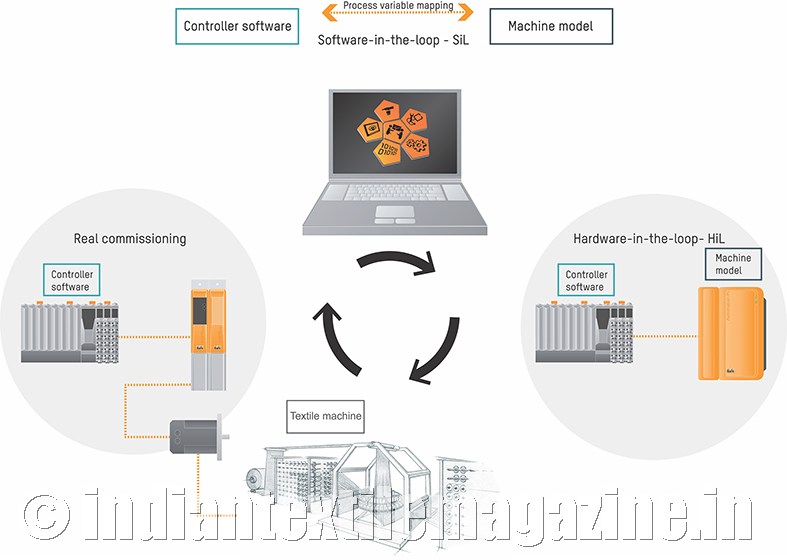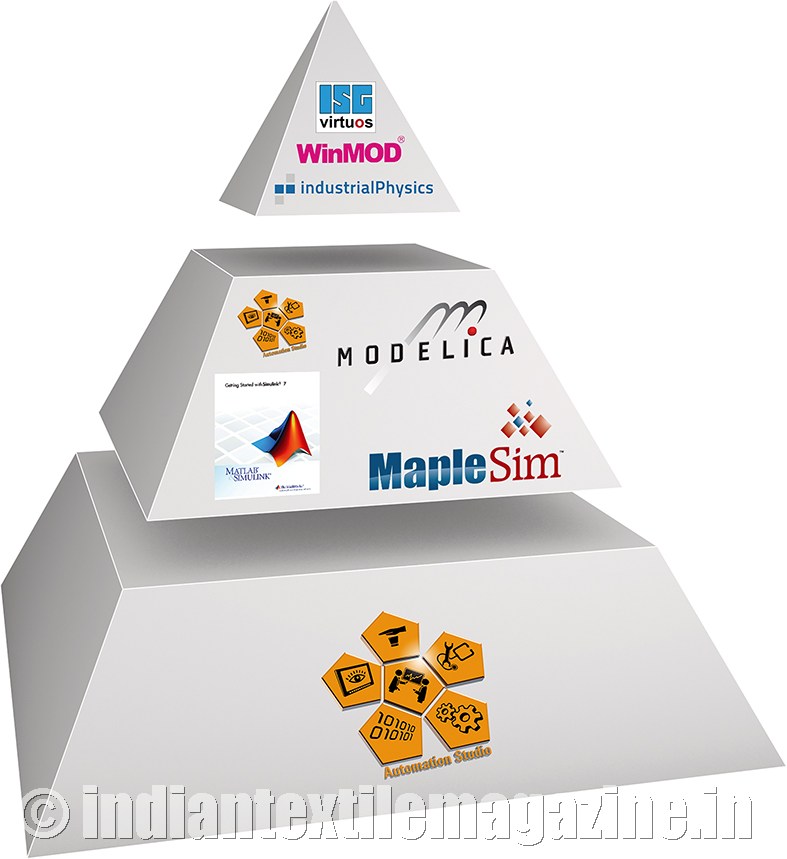Technology has already changed the way we perceive fashion and the way we shop. Growing demand for customisation and quick delivery are driving the textile industry to embrace digitalisation as an integral part of its operation strategies and overall business models. In the textile industry where competition is fierce and margins are tight, digitisation helps reduce time, increase efficiency and provide flexibility for both the textile manufacturer and the textile machinery builder.

Digital Twin provides a complete digital footprint of machines, enabling machine builders to detect physical issues sooner, predict outcomes more accurately, build better machines faster with superior quality, reduce time-to-market and costs. Virtualization is very powerful allowing visibility of machine operations as well as large interconnected manufacturing systems.
‘Virtualizing’ a reality in industry
By making virtual representation of products or processes, Digital Twin is helping textile machine builders to save cost and time involved in building machines and software development. Digital Twin is a digital representation of a product, equipment or a process. It is essentially a combination of data and intelligence, representing the structure, behavior, and context of a physical system of any type. It provides an interface that allows understanding the past and present operations of assets and helping predict the future.
Machine design, hardware selection, software development, electrification, commissioning are some activities which are followed during machine building. Any delays in even one activity leads to delays in machine deliveries. Mechanical machining is a critical aspect, and when this design needs to be coupled with the electronics such as drives and motors. Many a time this creates issues and leads to a lot of rework in designing and machining of mechanical components, thus resulting in reduced time for software development. It would be a joy for all machine builders if they were able to see the performance of mechanics with chosen electronics without having either in their shop floors. This would reduce time needed for rework, the cost arising out of this rework, meet delivery times with higher quality. With virtualization, it is possible for simulating the entire machine even before the mechanics are machined and the electronics are procured.

The textile industry is leveraging Digital Twin to optimize operation, asset performance and maintenance of machines and factories. It enables textile companies to achieve an automated manufacturing process using the latest technologies by connecting the entire process ensuring seamless information flow from design to engineering. Connected industrial assets generate millions of data points. Integrating a Digital Twin with data generated from physical assets enables machine builders to decide whether a device is reaching its end of life. An engineer can always update the parameters online so that the digital version matches the physical one.
Digital Twin has several benefits, including the ability to run in line with the real machine to enable rapid task-planning and early detection of potential problems. Digital Twin provides an integrated outlook of any project to any user at any point of the product life cycle. It enables continuous improvements in process and design as well as enhanced operations and maintenance.
The implementation of enterprise asset management and lifecycle services strategy with Digital Twin within the overall Industrial IoT ecosystem provides significant benefits to machine builders. By integrating, a Digital Twin of the machine design on a real-time platform helps accelerate commissioning, reducing risks and decreasing costs by configuring and testing in parallel with the real machine.
Textile manufacturing is a complex process, starting from crops to fiber to finished products. A textile shop floor includes various machines such as spinning, weaving, dyeing, printing, finishing and finally garment manufacturing. Being a continuous process, any unplanned stoppages impact productivity and profitability. Digital Twin helps meet many of the manufacturer’s needs at a micro level.
Machine builders also leverages virtualization for faster time to market and reduced development costs. With Digital Twin, B&R helps machine builders to virtually develop and test machines without the need of actual mechanics and electronics.
Automation studio, the single tool for programming all B&R components, has an in-built simulation environment which enables simulation of controls, I/Os and even motion components. Apart from hardware, software and technology scalability with B&R system, machine builders can simulate the entire electronics even before they receive the hardware. In addition, software development of machine software is platform independent. Using MapleSim or Matlab, machine builders can even simulate the mechanics for dynamic modelling of machines and machine components. This simulation can then be imported in Automation Studio, enabling machine builders to have a simulation environment down to mechanics. Early testing and virtual commissioning can help keep errors in check despite the increasingly complex application code.
Simulated control systems linked to virtual machine components make it possible to verify the application code long before the first prototype machine goes into testing or operation. Machine builders with B&R virtual commissioning can accelerate and streamline the process of commissioning the actual machine. This minimizes risk and ensures reliably meeting project deadlines and quality targets.
Smart manufacturing with B&R
To remain competitive in the era of Industrial IoT, digital transformation is the need of the hour. B&R offers complete hardware and software solutions, comprehensive service and expertise in automation and digitalization of textile machinery and equipment. With dedicated technology and global open source communication standards such as OPC UA, POWERLINK and openSAFETY as well as the powerful Automation Studio software development environment, B&R is the right partner for implementing industrial IoT solutions in both new and legacy equipment. With solutions for machine to factory automation, B&R serves as a perfect partner to the textile industry for sustainability, flexibility, higher productivity and profitability.
“B&R is not just an automation vendor for machine builders but acts as a solutions partner for all of their automation needs, whether simple or complex. Being a technology leader, we continuously introduce innovations to the market thus, shaping the industry. B&Rs support and push for open technologies helps in reducing the total cost of ownership and provides a common platform for networking due to the vendor independent nature of protocols. For machine-to-machine and machine-to-cloud communication, B&R trusts in OPC UA, MQTT and AMQP for secure and safe connectivity to cloud. The use of OPC UA for cloud connectivity provides the security mechanisms for connectivity as it already has the necessary IT security measures in place. In addition, the operating system is built for secure it from cyber-attacks.”
Mr. Ninad Deshpande, Head- Marketing
